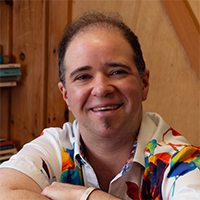Write More Than One Book—Your Current Draft Will Thank You
Want to improve your current manuscript? Picture yourself writing more than one book.
Annie Mydla, Managing Editor
I have a question for first-time authors:
Have you thought about writing more than one book?
This question might sound silly if your first work-in-progress is still...in progress. But I put it to you that "I can write multiple books" is one of the most powerful ideas an author can have.
Why? Because it frees us to do what's right for this book.
I've critiqued over 600 full-length books and manuscripts, and their number-one problem is having too much stuff. Understandably so. Cutting things back can feel like a betrayal of our precious creations.
But what if we imagine writing more than one book? All of a sudden, the need to smush all our best ideas into one volume goes away. If we have favorite parts that are starting to compete with the book's bigger picture, we don't have to kill them. We can pluck them out and transplant them where they have the freedom to grow.
Have a supporting character you can't stop writing about? Are they starting to take over your main plotline? Maybe you've just found the protagonist of your next book.
Writing in one genre, but keep gravitating towards another that doesn't fit the plot? Give that genre full play in a future project, with a plot tailor-made to show it off.
Is there a subplot that keeps creeping into your dreams, that you can't stop developing, even though it's leading your story on a tangent? What if it's the basis for your next novel? Or short story? Or a subplot in a future book that you haven't even imagined yet?
Feel tempted to follow every subplot in your manuscript to its full potential? You could have a series on your hands. With a series, you'll have a chance to fully explore and resolve every one of those plots. Just release them from their competition with the original premise and watch as they blossom.
Genre fiction, literary fiction, creative nonfiction, and memoir all benefit from this approach. It also works with children's picture books. Think about Clifford the Big Red Dog. Instead of giving Clifford a new job, having him celebrate by going to the circus, and then sending him to join his friends for trick-or-treating, all in one day, Norman Bridwell channels the events into three separate books: Clifford Gets a Job, Clifford at the Circus, and Clifford's Halloween. Sequels free us to explore each premise the way it deserves.
The Hunger Games series is another excellent example of how to spread material over multiple books. The series as a whole follows three main events: Katniss's first Hunger Games, the rebellion against the Capitol, and the ultimate downfall of the Games. A relationship arc between Katniss and her friend Peeta is a strong B plot throughout. An inexperienced writer might try to pack all of these things between two covers. Instead, Suzanne Collins allows the plotlines to grow over three different books, which all have their own climax and resolution dealing with Katness's first Games, the rebellion, and the Games' downfall, respectively. Importantly, Collins also holds off on backstory about secondary elements, like the origin of the Games and the past life of Katniss's mentor, Haymitch. These topics form the basis for two separate prequels. The result? A triumph of commercial YA.
Even poetry collections can get stronger when split into more than one book. Long collections with multiple focuses aren't likely to gain favor with publishers or contest judges. A shorter collection with a tighter focus is likelier to get attention. The other poems aren't thrown away—they form the basis of new collections.
Successful editing can be yours with this one small change in perspective. What if, instead of thinking of excisions as tree branches bound for the woodchipper, we think of them as seeds for future projects? If we cultivate them in their own beds, they can blossom into their own beautiful books. Meanwhile, we'll be growing our creativity, our artistic satisfaction...and, of course, our body of work.
So. Have you thought about writing more than one book?
Categories: Advice for Writers, Annie in the Middle







